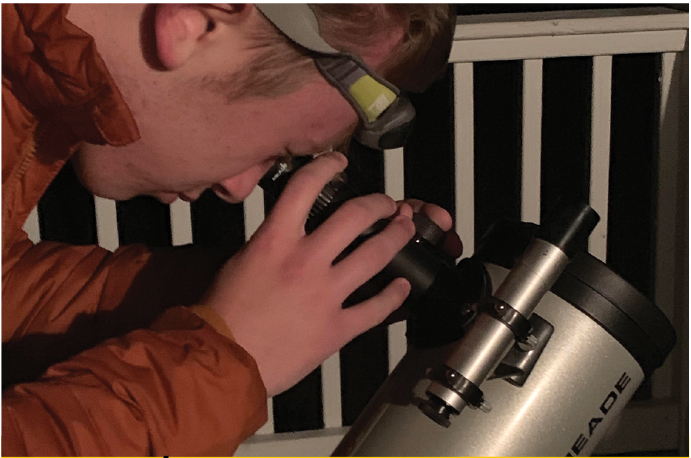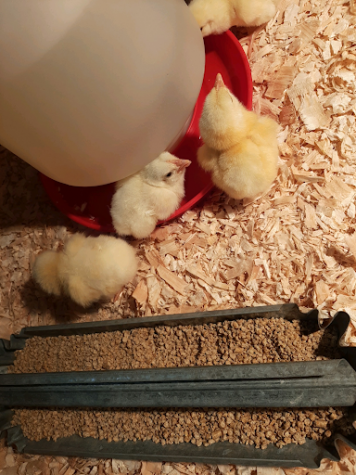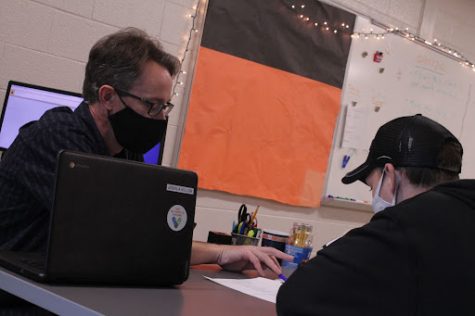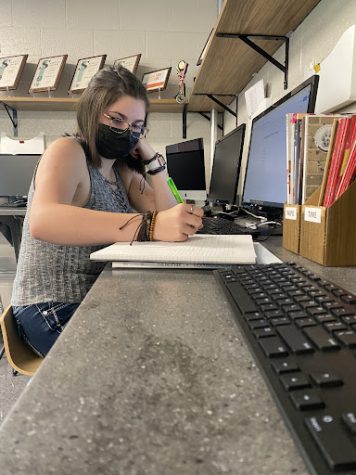Backyard Astronomy
Trying to spot the North Star and numerous other constellations, sophomore Jonah Coffman peers through his uncle’s telescope toward the great universe that surrounds our plant.
The darkness of night and the warm spring weather made it a perfect night to look upon the stars. With the use of his uncle’s telescope, sophomore Jonah Coffman, gazed up toward space at the bright burning balls of gas that exist millions of light years away.
Over time, the clear pictures of the stars that we see when we glance up worsens due to our light polluting space.
Big cities create a bunch of light which affects how we can see the stars, a huge reason why those who overlook the stars must know how to view them in a more realistic light.
The good news is that we live in a small, rural village. Small little towns have an advantage with the reduced light pollution. Stargazing for rural enthusiast is as easy as looking up.
“Energy conservation is actually a component in light pollution. Many of the lights we have in our streets are projecting upwards essentially wasting energy. Instead if we design lights such that most energy is facing downwards we help light pollution and also help the reason the street lights are present,” professor and chair of astronomy Edwin Bergin said.
The celestial bodies of gas in space combine to tell stories or make shapes that we all remember to the point of their becoming iconic. Most of us remember learning to spot the Big and Little
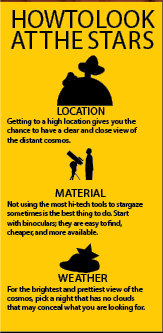
Dippers before kindergarten.
The stars have so many intriguing qualities that should make the idea of them light up in the heads of the general public, but the cry for attention falls on deaf ears.
“You can learn a lot from the stars,” Coffman said. “There is a lot that we don’t know; the stars can be a kind of guide.”
Simply just looking up at those beautiful stars in the sky can inspire so much. In the past, ancient peoples like the Phoenicians looked up to the stars for spiritual and practical reasons, and the same is true today.
Stories can be told by the stars. At one time they had a more direct effect on humans. From the atoms that we are made of to the guiding Phoenician sailors, the stars have impacted the ways humans have lived for eons.
Better yet, the process of looking at the stars may reduce stress. Looking up at the speckles of light in the sky, shrouded in a blanket of darkness can ease the mind. After a 2015 study involving healthy people doing nature walks and measuring brain activity, the study concluded those who did the nature walk had less brain activity in their prefrontal cortex.
After days full of non-stop family interaction, a little relaxation and silence sounded like the perfect stress remedy for sophomore Evelyn Ortiz-Martinez. “It’s those quiet nights and the shining stars that let me just clear my mind,” she said.
The stars and other cosmic objects like moons and planets play a part in where we are in the universe. The gravitational pull that these galactic objects have kept us the perfect distance from our heat source, so we do not burn to cinders or freeze to death.
“The stars are a big part in why we’re here because so many of the gases they’re composed of are found inside of us,” Bergin said.



